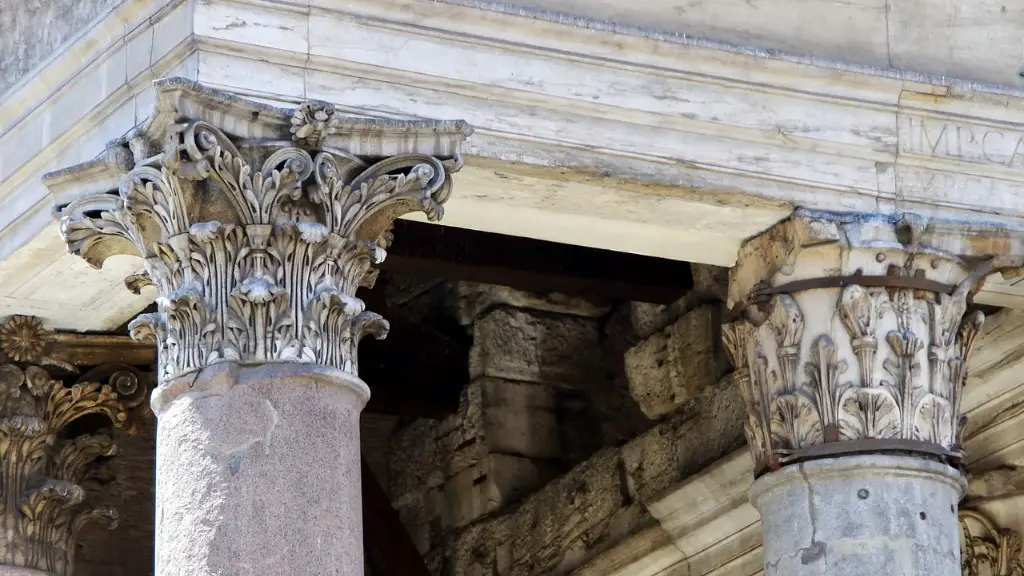The construction of the Colosseum dates back to 72 CE, and it was completed in around 80 CE during the reign of Emperor Titus Flavius. The Building was built on the site of a lake near the Velabrum which was filled in with dirt. The Colosseum is an elliptical structure with a total area of 6 acres. The structure is 188 meters long, 156 meters wide and over 50 meters high with a total of four floors. Each floor had its own level of galleries and seating for the spectators, making it the world’s largest stadium at the time. The amphitheater was constructed from stone and covered in travertine marble from Tivoli. The Colosseum had the capacity to hold up to 50,000 spectators.
The Colosseum was a place of intense entertainment and spectacle. It was the largest of Rome’s games and demonstrations, including gladiator fights, mock sea-battles, animal hunts, and even executions. Gladiator fights were the most popular games in the Colosseum. People would attend the games to watch as gladiators fought each other or fought wild animals. The Colosseum also housed theater performances, public speeches, religious ceremonies and other events.
The Colosseum has long been a symbol of the power of the Roman Empire and its architectural excellence. It is a testament to the engineering and construction prowess of the Roman civilization. It is the most iconic and impressive of all the surviving Roman monuments, and is one of the most famous sights in the world. Its construction is thought to have been heavily influenced by the Flavians, the dynasty of emperors who followed the Julio-Claudian Dynasty.
Despite the Colosseum being a symbol of the greatness of the Roman Empire, it has had a tumultuous history. It was damaged by fire on numerous occasions, most notably in 217 CE and was twice struck by lightning. It began to suffer from neglect following the fall of the Roman Empire, yet it still stands today as a symbol of the grandeur and power of the Roman Empire. It has been repaired and restored over the centuries and it is now a popular tourist attraction.
Economic Contributions
The construction of the Colosseum was a major contributor to the economy of the Roman Empire. It was built to boost the morale of its citizens and to offer them a place of entertainment and spectacle. Building on such a grand scale employed thousands of laborers and engineers to complete the construction. It is estimated that 30,000 Jewish slaves were put to work to complete the construction and other tasks needed to make the Colosseum a place where people could come together to be entertained. Furthermore, tourists flocked to the Colosseum to see the wonders of the Roman civilization, providing a great boost to the Imperial economy.
Opinions of Historians
The construction of the Colosseum has long been regarded as one of the most impressive feats of the Roman Empire. Historians hail the Colosseum as the pinnacle of Roman engineering and craftsmanship, noting that it showcases the skill of the Roman civilization to build a location with such grandeur and scale. Historians have also praised the Colosseum for its historical significance, noting that it stands as a testament to the skill, power and creativity of the Roman civilization.
Connection with Popular Culture
The Colosseum is a popular icon of the Roman Empire, and has become a popular image in popular culture. It has been featured in movies and television shows, and its image can be found on merchandise such as clothing and other items. It is a recognizable symbol and has become a representation of the greatness of the Roman Empire. Furthermore, its grandeur and history have made it a popular tourist destination, and it is visited by hundreds of thousands of people each year.
Significance in Modern Times
The Colosseum has long been a symbol of the Roman Empire, yet its significance has not been forgotten in the modern day. It is a reminder of the ancient Roman civilization and its skill and prowess. Furthermore, its construction has taught us about architecture and engineering, and its ongoing preservation shows us that history and culture can endure through time. It stands as a lasting monument to the greatness of the Roman Empire, and a symbol of its importance in our history.
